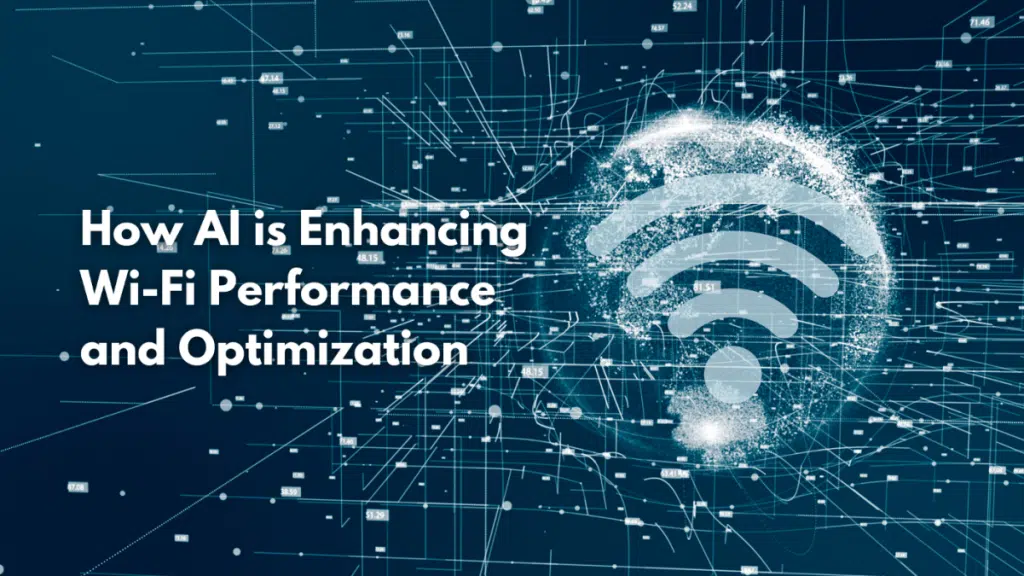Envision a Wi-Fi network that adapts to your usage habits on its own. Better connectedness is made feasible by AI in this way. With more people in homes and businesses needing reliable internet access, AI-powered solutions are being developed to improve Wi-Fi performance and user experiences.
This article will examine how artificial intelligence is transforming Wi-Fi networks and the implications for network installation and maintenance.
The Advancement of Wireless Technology
Since the initial iteration of WiFi, it has significantly advanced. From the 802.11b standard, which offered basic connection, to 802.11n, 802.11ac, and now 802.11ax, or Wi-Fi 6, each generation added more complexity to the management and optimization of Wi-Fi while simultaneously improving speed, range, and efficiency. This is where artificial intelligence enters the picture and completely changes the way we perceive wireless connectivity.
Network Installation Services’ Function
A strong network infrastructure is necessary to effectively utilize AI’s potential. This is when network installation services become important. Installing network components like routers and access points correctly creates a solid foundation for efficient AI-based optimization. Important components in setting up a network comprise:
Installing Structured Cabling
The foundation of any well-organized network is structured cabling. The procedure entails installing low-voltage wires to link different network components. For AI systems to function as intended, well-designed wire structures are necessary. Data is transmitted with confidence and the likelihood of connectivity issues is decreased when cabling is placed properly.
Services for Network Installation
These services guarantee that a professional network installation is completed, correctly configuring and setting up each component of the network for maximum performance. The installation of switches, routers, access points, and other networking hardware would also fall under this category. An appropriate installation creates a very strong foundation for AI systems to operate efficiently in terms of optimization.
AI for Wi-Fi Performance Optimization
the younger generation of Wi-Fi networks are using artificial intelligence (AI) more and more to solve performance issues and guarantee connectivity. The following is how AI enhances Wi-Fi performance:
Flexible Bandwidth Control
Then, AI-powered systems will dynamically distribute bandwidth according to user demand and the network’s current usage. Artificial intelligence (AI) algorithms, for example, examine data coming from networked devices and modify bandwidth allocation. This guarantees adequate bandwidth for applications that demand it, including online gaming and video streaming, while optimizing the management of other activities. Users benefit from faster and more dependable connectivity as a result.
Intelligent Signal Strength Modification
AI technology regularly checks the network’s signal quality and strength. An AI system may maximize coverage areas from within any given access point by using this pattern analysis, interference detection, and real-time signal strength manipulation. Multidevice access points operating in high-density user areas, such as office buildings or large houses, will find this very useful. Increased signal strength improves network performance overall by reducing lost connections.
Enhanced Safety
In actuality, security is a crucial component that the Wi-Fi network must have. AI improves this by quickly identifying potentially dangerous activity and anomalous activity. AI-driven security solutions examine network patterns and find anomalies pointing toward a security breach or cyber-attack. By doing this, dangers will be reduced and private data will be safeguarded.
Conclusion
AI is continuously influencing Wi-Fi performance and optimization, opening a path for far superior solutions that can enhance the level of connectivity and user experience. Wi-Fi networks with AI are more efficient and reliable thanks to adaptive bandwidth management, smart signal strength adjustment, predictive maintenance, and enhanced security.
Network installation services, such as structured cabling installation and low voltage cable installation, also play an important role in this advancement brought by AI. As technology evolves, AI-integrated Wi-Fi networks will offer seamless and optimized connectivity across all platforms and locations.
FAQs
How can AI improve Wi-Fi performance?
AI will improve Wi-Fi performance by dynamically managing bandwidth and signal strength based on real-time network conditions and user behaviors. This serves to ensure a more stable and continuous connection for all users.
What is the contribution of low-voltage cable technicians to AI-powered Wi-Fi?
Low-voltage cable technicians install and maintain the cabling infrastructure that supports AI-driven optimization. Their expertise ensures that the installations are rightly done to maximize the effectiveness of AI in bringing out improved performance.
Can AI help prevent security breaches in Wi-Fi?
AI further strengthens network security through continuous traffic monitoring for patterns that seem unusual or may pose a threat. This proactive approach allows it to quickly identify security risks and take swift action to protect user data and privacy.


